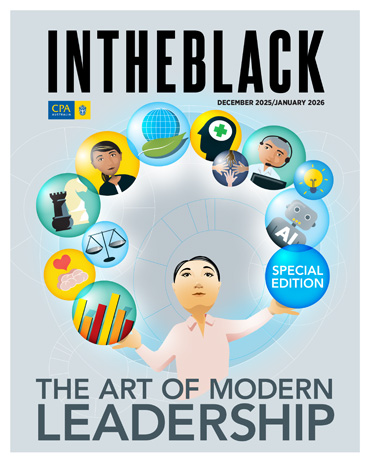Loading component...
At a glance
When times are tough, business leaders typically sharpen their focus on productivity in order to increase profitability. But in the quest to boost growth, leaders may risk compromising another vital ingredient for organisational success: innovation.
In broad terms, innovation describes the ability to create, deliver and scale new products, services, processes or business models. Productivity, on the other hand, refers to how much output can be produced with a given set of inputs.
Can these vital two ingredients work side by side, and how can organisations foster innovation while keeping productivity in check?
Productivity vs innovation
Michelle Gibbings, a workplace expert and author of Bad Boss: What to do if you work for one, manage one or are one, says productivity and innovation are complementary ingredients for growth — if used in the right way.
“Expecting employees to robotically churn out more work can lead to dissatisfaction and fatigue, and that’s not productive,” she says.
“At the same time, organisations often talk about innovation labs and hackathons and radical disruption, but they may not get anything at the end of it. This can lead to innovation fatigue, where it can feel like constant change for little reward.”
Stephanie Bown, leadership expert and author of Curious, Connected & Calm, believes that innovation can breed productivity, but that “the reverse is not necessarily true”.
“Productivity is about increasing output by doing things faster,” she says. “We can put ourselves under pressure to fill up free space with more tasks. This is where we can cut ourselves short on the capacity to innovate.”
Research from Gartner shows that Australian employees’ perception of innovation in the workplace reached an all-time low of 14 per cent in 2024. Australian employees also report feeling uninspired by their leaders, as organisations prioritise growth and productivity over creating purposeful opportunities for their workforce to innovate.
“Over the past four years, organisations focused on cost reduction and driving efficiencies through productivity enhancements,” says Aaron McEwan, vice president, research & advisory in the Gartner HR Practice.
“Towards the end of last year, growth moved to the top of the agenda, and it wasn’t about sharpening the pencils, but rather about shifting towards expansion. That type of growth requires innovation and creativity, which is very dependent on employee engagement,” McEwan says.
CPA Australia’s Asia-Pacific Small Business Survey 2024–25 found similar results. Only 8 per cent of Australian small businesses said they would innovate in 2025 through the introduction of a new product, process or service. The average for high-growth Asia-Pacific small businesses was 57 per cent.
AI and employee creativity
McEwan says a decline in employee perception of innovation is partly due to leaders seeking innovative solutions beyond their workforce.
“CEOs have recently been focusing on AI as the growth engine, particularly through increased productivity,” he says.
“They have been so bullish about the investment in AI that, to a degree, they’ve kind of forgotten about their workforce, because they think the tech can probably do the work more cost-effectively.
“AI may lead to more productivity but, at least at this stage, I don’t think it’s going to lead to more innovation and more creativity,” McEwan adds.
“In fact, it may potentially be damaging your workforce’s ability to be innovative, as there’s a broader message where employees are not being encouraged to drive creativity and be at the centre of organisational growth — because there’s a tool that CEOs think can maybe do that for them.”
McEwan notes that while the pandemic fuelled workplace innovation and inspired employees to excel in a changed work environment, return-to-office mandates put this at risk.
“Leaders trusted their employees to work out this massive problem that the world had never faced before and completely transform the way that they worked — and they did it,” he says.
“Now, more leaders are suggesting that they can’t trust their employees to do that anymore. It’s not necessarily intentional, but it does impact the sense of the workforce’s ability to be innovative and creative and to drive growth,” McEwan continues.
CPA Australia’s Business Technology Report 2024 found that the top three impacts that AI is having on business are: improved efficiency through the automation of tasks, increased productivity and improvements in decision-making through better data analytics.
How leadership fuels growth
For productivity and innovation to work side-by-side, leaders must not lose sight of their greatest asset: their employees.
“Innovation comes from two things that are ‘premium’ in organisations,” Bown says.
“One is good thinking and applying an analytical or creative lens to the ways that we work, and the other comes from our ability to leverage the collective capacity of our teams.
“This means bringing good thinkers together to solve problems in different ways, to come up with new ideas or ways to address existing challenges.
“That’s the breeding ground for innovation,” Bown adds. “Productivity can get in the way if we’re so focused on maximising output that we’re not encouraging people to create the mental space required to really think about what they’re doing, to plan, to think more broadly about what customers need and how they can deliver a better-quality outcome.
“To do more with less is ultimately what we’re trying to achieve through innovation.”
For McEwan, balancing productivity with innovation comes down to leadership.
“Growth, particularly through innovation, is going to come from where it’s always come from, which is untapping the potential of your workforce,” he says.
“Whenever we see great leaps in productivity and performance, it more often than not comes from a workforce that is highly engaged and committed and passionate,” adds McEwan. “That’s what leadership is ultimately about.
“It’s about good old-fashioned caring for your people, understanding how to get the best out of them, creating the conditions and environment that’s going to optimise their performance, but also sending the message that they are important and valued, and that growth will come from them.”

